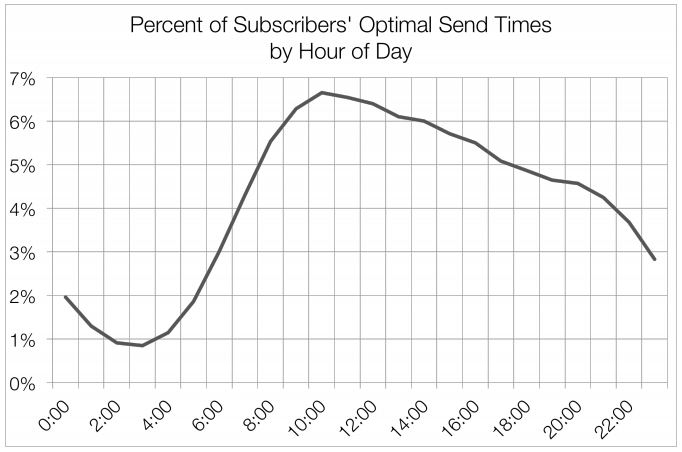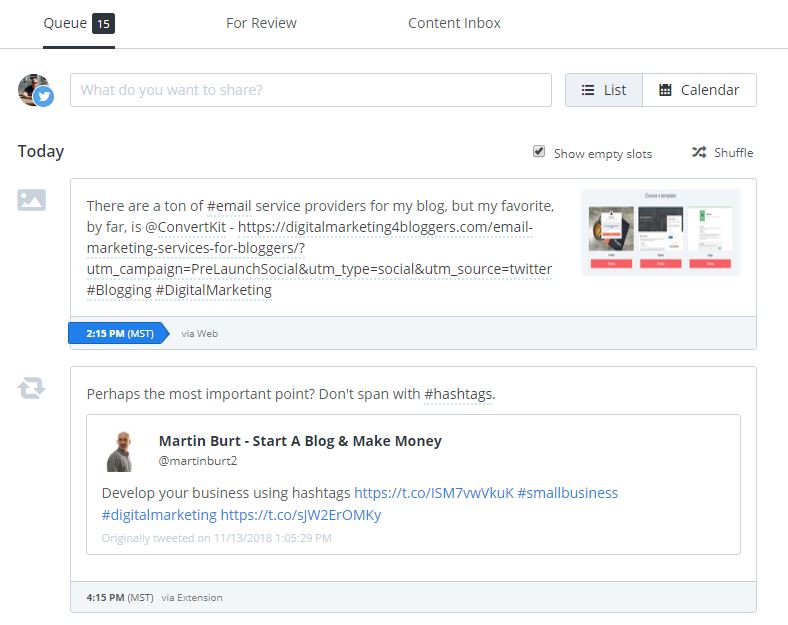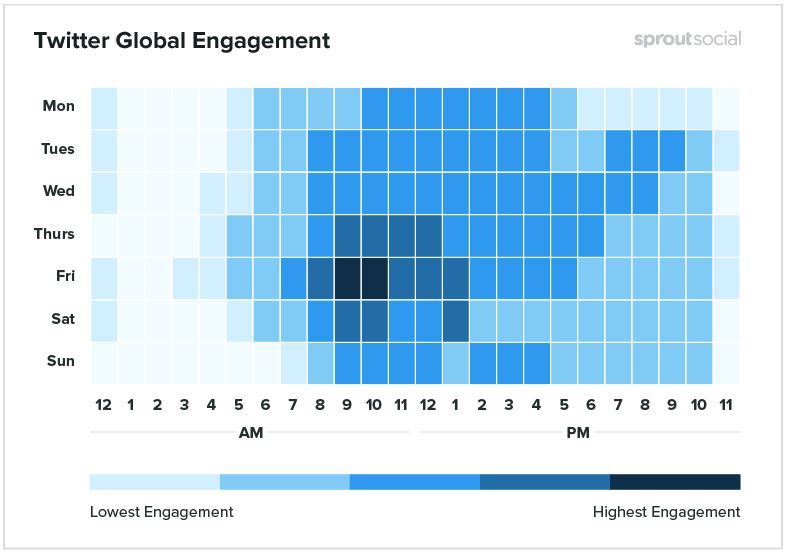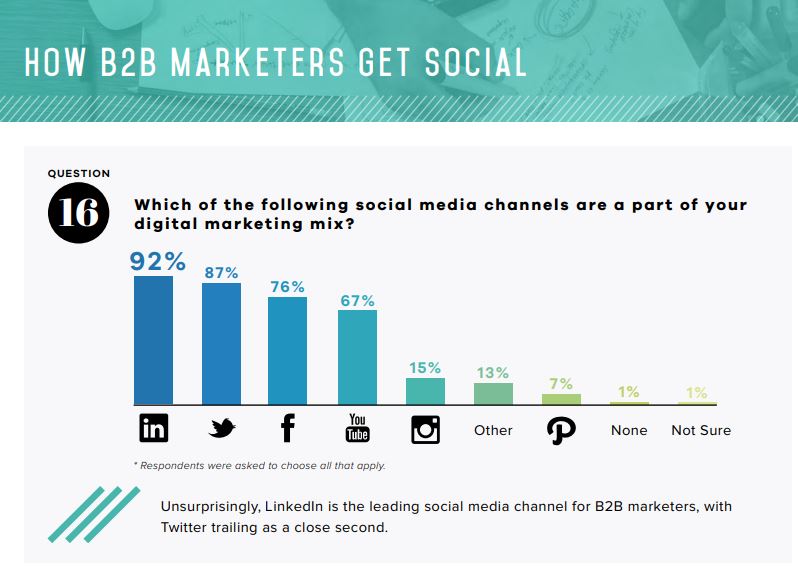You know what’s so thrilling about publishing a new blog post? The digital marketing that comes after! You’ve spent hours writing the perfect blog post. You’ve got links to studies, infographics and scannable text.
But, that’s only part of the process. Successful bloggers tend to spend much more time marketing their posts than actually writing them.
How much time, you ask? According to Statista, two to three hours was the most common amount of time bloggers spend writing blog posts.

Are you spending more time marketing each post than you are writing them? Before I understood what it took to be a successful digital marketer, I spent only a fraction of the time marketing the post as I did writing it.
That was a big mistake.
Digital marketing takes time, and the more time we spend marketing our posts, the better that they tend to do. Naturally, more effort tends to equate to more reward.
After we hit publish, what can we do to get butts in the seats and eyes on our content?
First, make sure that the post conforms to the basic elements of good content.
Things like:
- Scannable text.
- Short, easy-to-read paragraphs.
- Multiple links to high-quality resources.
- Proper headings (and only a single h1 tag on the page!).
- Bulleted lists to describe individual topics and processes.
After writing high-quality content that’s a breeze to read and captures reader interest, our next step is getting people to read it!
5 things you must do after hitting publish
Here are 5 things that you must do after hitting the publish button.
1. Write a hand-crafted email to your email list
Your email list is the most prized possession of your blog. Your subscribers are eager and ready to read your content. After all, that’s why they forked over their email.
But, don’t just set up an RSS emailer and call it done.
Here’s the thing. Your emails become way more effective when you put some effort into writing them. Instead of using automated RSS systems to automatically send out your post to your email list, spend the extra time to write a custom message that introduces your post. It’s like giving your readers the white glove treatment.
Custom emails make your emails sound much more personal.
Remember, think of your emails as a one-on-one conversation with each reader. Conversations are personal. They should not come across like a mass email.
Here’s one of my favorite examples from Femtrepreneur.co:

Notice how conversational the email is. It begins with “I was just thinking today about…”. It also tells a story, which is critical in writing effective emails.
It’s scannable through the use of bold, italics and font size changes throughout the text. It’s an effective email.
And, understand when to send your email so it has the best shot of being read.
MailChimp published insights on this topic, and they’ve concluded that:
“In general, it’s most optimal to send to most subscribers on a weekday. Sunday is the best day to send to the fewest number of subscribers, while Monday through Friday are all quite similar in terms of the percentage of email addresses that have that day as optimal.”
The best time to send your emails will also depend on the type of content you’re sending.
“Business-related content has a less than the typical number of subscribers with weekend optima. On the flip side, recreational content usually enjoys a healthier than typical percentage of subscribers with weekend send times.”
What time of day is best to send the email? According to MailChimp, around 10am.

2. Post repeatedly to social media using custom messages
You are beginning to see a theme, here. Just like with email, don’t let automated applications simply spit out the title and your URL on social media and expect your content to resonate. If it were that easy, we’d all be killin’ it on Twitter and Facebook. Fortunately for good digital marketers, it’s NOT that easy.
Instead, put some time into scheduling social media posts using thoughtful messages that add value to your content that make it irresistible.
I promise spending this additional time will separate your stuff from everyone else’s. Spend a little time on Twitter and Facebook and you’ll quickly notice the difference.
I use Buffer.com to schedule Twitter and Facebook messages. Buffer makes scheduling social media messages easy, simple and effective.

To make your social media posts more effective:
- Don’t just post the title and URL over and over – put some thought into it
- Change the message with each and every post; resist posting duplicates
- Use different pictures from the article with each message
- Ask questions as a part of your post to encourage engagement
Also, choose the right times to post on social media. Believe it or not, there’s science behind timing your messages so they are most effective.
Social Sprout published an excellent resource that dives into this topic.
With 1.4 billion users, Facebook remains the most active social media outlet on the Internet, by far. Chances are that your readers use Facebook, and reaching them at the right time will help your digital marketing.
According to Social Sprout:
- The best times to post on Facebook are Wednesday at noon and 2 p.m. and Thursday at 1 and 2 p.m.
- Thursday is the best day to post on Facebook in the week.
- The safest times to post include weekdays from 10 a.m. to 3 p.m.
- Saturday has the least amount of engagement for Facebook in the week.
- Evenings and early mornings have the least amount of engagement in the day.
Facebook is a great tool, but what about Twitter?
“Twitter engagement doesn’t stop on the weekends,” writes Social Sprout.
“Some of the higher engagement happens during afternoons on Saturday. This could be due to sporting events during these time periods. Additionally, engagement goes deep into the night nearly every day except Monday.”

Mid-morning is the best time to post to Twitter according to the numbers. And, Friday posts generally see the most success. The worst day? Sunday.
But, here is the thing about Twitter. Due to the nature of how Twitter works, about 350,000 tweets are sent every minute, which means each post that you post will likely fall down your reader’s dashboard page fairly quickly.
What can we do to increase the chances that our readers are seeing our stuff?
Tweet more often. I generally like to post at least three or four times on Twitter the day that I publish a new article to capture as many eyes as I can. One tweet just won’t cut it.
3. Tell Google to pick up the pace!
While Google will eventually pick up your new posts, it’s also wise to make it as easy as possible for Google to know about your newest stuff.
First, if you aren’t sure whether or not your site is indexed in Google (especially for newer blogs), try searching for site:[yoururl], like this:

If your site wasn’t indexed, you’d get a blank results page.
Now, let’s shift our attention to Google’s Search Console. If you aren’t already set up with the Search Console, take a moment and set yourself up…now.
Next, add a sitemap to your blog if you don’t already have one. What is a sitemap? It’s a document (or collection of documents) designed for search engines that contain links to every one of your posts and pages.
A sitemap won’t necessarily improve your ranking, but it will enable Google to index your new stuff more quickly. And, if you’re using WordPress, there’s a popular plugin – called Google XML Sitemaps, that can quickly and easily generate sitemaps for your blog.
If you aren’t sold on the concept of a sitemap, check out Google’s post on the subject.
Then, tell your Google Search Console about the sitemap using Search Console.

Now, Google will periodically check your sitemap for new content. But, you can also add new or updated pages to Google’s index queue by using the search area at the top.
To do this, paste in the URL of the page that you’d like to be indexed.

Then, click the ‘Request Indexing’ link on the page.

There is no guarantee when the page will be indexed, but it helps ensure that new pages, as well as pages that you’ve recently updated, are seen by Google.
4. Promote and syndicate outside of traditional social platforms
Many bloggers focus on social media outlets like Twitter, Facebook, Pinterest, and Instagram as the primary mechanisms for social growth. And, there’s nothing wrong with that.
After all, billions of people use social media. It’s an excellent way to promote content.
However, your blog’s marketing potential doesn’t end there.
I’ve had thousands of visitors flock to one of my blogs after a nicely-timed post on the hugely popular Reddit website. Keep in mind that Reddit is a very different animal, and most Redditors are incredibly sensitive to those who appear to be self-promoting. To be successful on Reddit, you’ll probably need a bit of practice.
I learned that lesson the hard way.
Or, consider using LinkedIn Pulse to publish content from your blog. LinkedIn is an increasingly influential part of B2B (Business to Business) digital marketing.
In fact, LinkedIn is the most popular social media platform for business marketers according to a study from DemandWave.

What else works that’s outside of typical social platforms?
Content syndication is another popular and hugely successful way to market content. On one of my blogs, my content has been syndicated through major media outlets like Forbes.com, CNBC.com, MarketWatch.com, and BusinessInsider.com.
The link juice from those sites is amazing, and if one of those posts goes viral on a major news website, the traffic is nearly unstoppable.
Naturally, it’s tough to syndicate on huge websites like those. As you might expect, they are very particular about what they publish, and they won’t accept just any blogger’s stuff.
Instead, start small.
Start by finding influencers within your blogging community. Use Twitter and Facebook to help find these people. Or, community forums often help reveal those who are more influential.
Then, pitch them. Send them an email, introduce your blog post and why it’s so darn awesome, and invite them to syndicate certain posts on their website. It’s free content for them and, of course, it’s publicity for you.
Don’t just ask them to “choose anything”. Pick a post that you want to be syndicated, then send a targeted email that talks about that single blog post.
Be sure to ask them for a canonical link back to the original article on your blog. Canonical links help Google resolve duplicates by pointing to the original source of content.
But, there’s also a way that you can syndicate your own content.
Medium.com is another popular choice among bloggers. It’s a free website set up to enable rapid publishing of content. Millions of people use it. And, your readers might just hang out there. I like to call this “self-syndication”.
Consider spinning up a Medium publication and syndicating your own content on that platform. Medium offers an easy import tool to quickly syndicate material that contains a canonical link back to your blog.
5. Hunt for internal backlinking opportunities
Average bloggers write posts as if they were individual units of information that stand alone. Smart bloggers, on the other hand, write posts as a collection of intelligence that, together, forms something far greater and more influential.
This connected web is enabled through the use of internal backlinks.
Internal backlinks help keep readers on your page. Spending more time on your blog will decrease your bounce rate with Google, increase pageviews and boost your chances of converting the reader into a loyal follower.
What are internal backlinks?
They are links within your posts that link to other posts on your site. If you notice, I have a bunch of internal backlinks on this page. When you’re talking about something that you’ve already written about (or even closely related), link to it.
Give your reader a reason to click around on your site. To spend some time reading your stuff. The longer the reader stays around, the more successful your site will be.
Guaranteed.
And, this is a two-way relationship. You’re not just linking from your new post to older posts. You’re also doing the reverse. That’s the key. You’re creating a web.
Each time that you publish a new post, do two things:
- Link from that post to older material that relates, and
- Go through your older content and include links to your new post
Many bloggers do the first, but not necessarily the second. And, it’s linking from older content to your new blog post that separates average bloggers from smart ones.
It takes time, but just like spending the extra cycles writing custom emails and social media posts, it’s time well spent.
Pro tip: Avoid using phrases like “Click here to see more!” and “Related content: [Blog post here]” in your internal backlinks. Google likes content that is more natural. Organic. And frankly, most people do as well. Use anchor text that’s natural and conversational.
Bonus: Let other sites know that you linked to them
If you linked to other websites, shoot them a quick email to let them know that you’re spreading the love in their direction. They might ignore it, but you never know – many bloggers will return the favor with a reciprocal link.
Or, they might plug your article on social media. It all adds up.
What say you? Do you do anything different – or anything MORE, after publishing a new post? What is the most effective technique that you’ve found to market new posts?




2 Comments
This is the first article I’ve read on digital marketing for bloggers that I almost completely understood! It also isn’t totally overwhelming as many other such articles are. Thank you so much for sharing your ideas in a practical way for beginners. I’ll be putting some of your suggestions in practice starting today.
This is chock full of amazing pointers on how to get some readers. I will be implementing these as I go along. Thank you very much for sharing this knowledge Steve